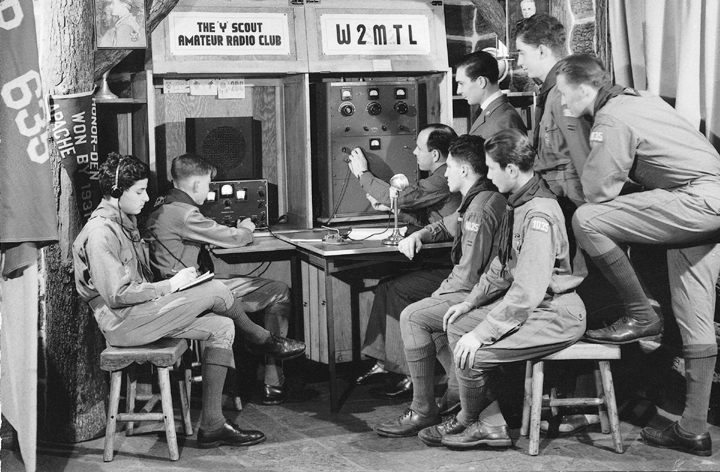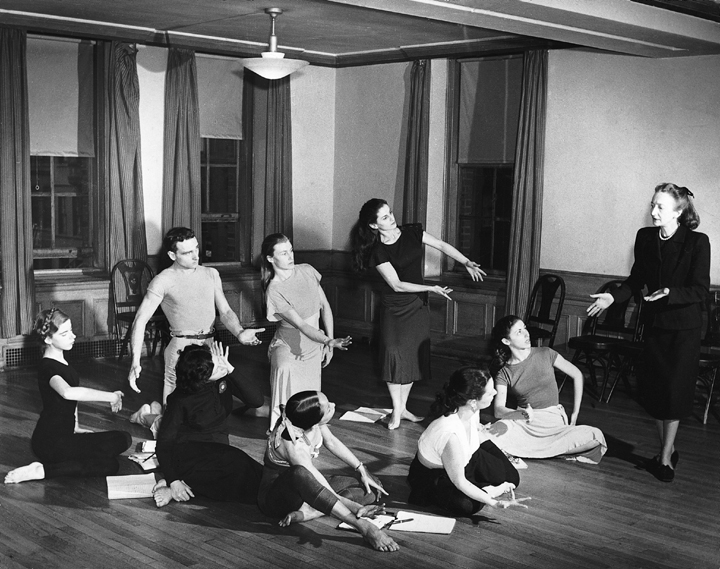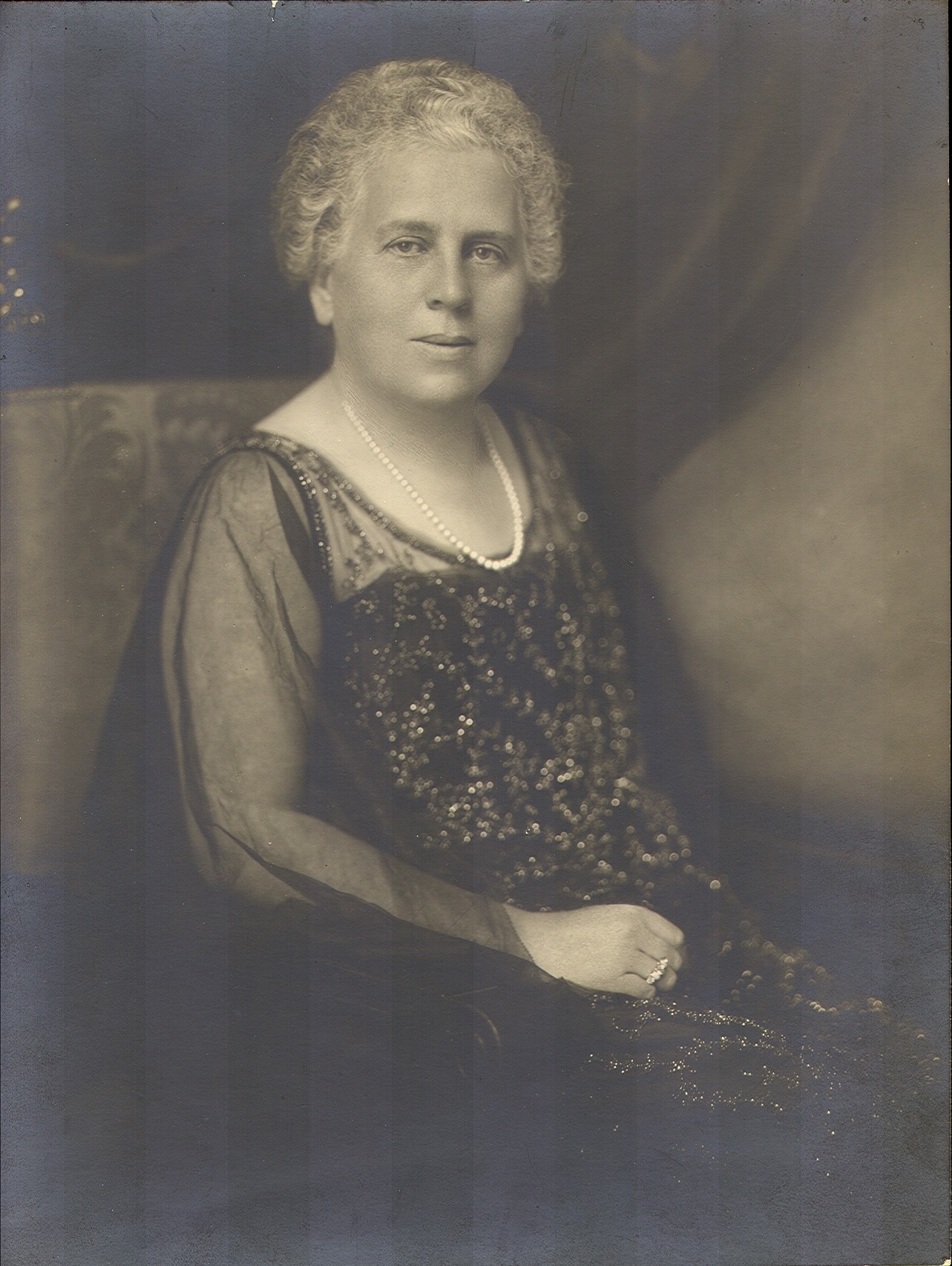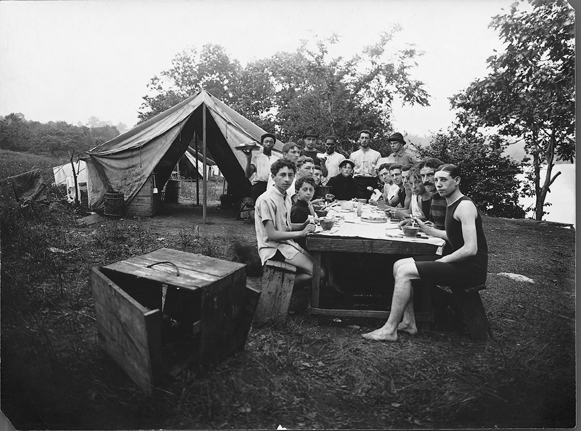1874
Young Men's Hebrew Association founded in March by German Jewish professionals and businessmen. Dr. Simeon Newton Leo hosts the first meeting at his home. Rented quarters including parlors, a reading room and gymnasium acquired at 112 West 21st Street.
1878
Improved finances allow the Y to move to larger rented quarters at 110 West 42nd Street. Facilities include a gymnasium, bowling alley, reading rooms, club and classrooms. Tickets are purchased by members to celebrate the festival of Hanukkah, with special entertainment consisting of a series of tableaux, music and dancing.
1882
Downtown branch, later to become the Educational Alliance, established to serve members living on Lower East Side and to aid the new Russian Jewish immigrant population. Emma Lazarus, whose poem "The New Colossus" is later engraved on the base of the Statue of Liberty ("Send us your tired, your poor, your huddled masses.."), teaches English to young immigrants here.
1886
The Y moves from 42nd Street to 721 Lexington Avenue at 58th Street to better serve its constituency.
1895
Financial difficulties force a relocation to 111 East 59th Street. New Board leadership develops community support marked by major gifts from Jacob H. Schiff and Mrs. Esther Herrman.
1897
The Y moves to 861 Lexington Avenue near corner of 65th Street, a brownstone donated by Jacob Schiff with a gymnasium, library and club and classrooms.
1899
Jacob Schiff, impressed with YMHA's success, purchases property at 92nd Street and Lexington Avenue and spends $150,000 to construct and equip a building on this site.
1900
Following construction, the new YMHA opens at 92nd Street and Lexington Avenue. YMHA Bulletin debuts and continues publication for 80 years. First High Holy Day services held - an annual tradition that continues to the present day.
1906
Social Work, Educational and Religious departments offer ever-expanding programs; YMHA Preparatory School offers free classes to members in many subjects.
1910
Vacation Camp property acquired at Surprise Lake in Putnam County adjacent to Educational Alliance camp. Surprise Lake Camp evolves from this partnership.
1911
Felix M. Warburg, Jacob Schiff's son-in-law, donates Heinsheimer Memorial Annex on 92nd Street. Annex includes swimming pool in basement, dormitory for young men and activity room.
1913

Boy Scout Troop 635 at the YMHA becomes the first troop organized by a Jewish community center in America.
1916
Camp Lehman for boys and younger teens, established at Port Chester, N.Y. on the estate of Judge Irving Lehman, continues until 1942.
1922
Jack Nadel begins a 35-year tenure as executive director and sets the stage for the Y's ever-expanding role as a major contributor to the arts, culture, social work and community services in New York City.
1924
The 50th Anniversary is celebrated. Attendees include Senator Royal S. Copeland of New York, Judge William Cunningham of the Knights of Columbus and James Speers of the Young Men's Christian Association.
1927
YMHA President Judge Joseph M. Proskauer launches a $1.5 million building fund campaign. Henry Kaufmann, of Pittsburgh, pledges a gift of $200,000 to be used to build the Theresa L. Kaufmann Auditorium as a memorial to his wife.
1928

Young Women's Hebrew Association at 31 West 110th Street becomes temporary headquarters during construction of the new YMHA building.
1929
Cornerstone for a new building at 92nd Street and Lexington is laid by Mrs. Jacob H. Schiff, whose late husband's vision for the Y had profoundly influenced its development.
1930
New YMHA building opens. Considered the largest and best-equipped Jewish community center in the U.S., facilities include dormitory for 235 men, two gymnasiums, a 25-yard pool, kosher cafeteria, billiard room and many other amenities. Art Center is established.
1934
Cultural arts and educational programs expand dramatically with the arrival of William Kolodney as education director. Serving in this capacity for 35 years, he initiated many of the programs which became cornerstones of the Y's service to the Jewish community and the general public.
1935

Dance Center at the Y is formed, and dance and dramatic subscription series are inaugurated in 1936. Leaders of the modern dance movement such as Martha Graham, Doris Humphrey, Hanya Holm and Charles Weidman are among the teachers and performers supported and nurtured by the Y.
1938
YMHA purchases adjoining property at the corner of 91st Street for a new building for Young Women's Hebrew Association, but plans are altered due to World War II. Nursery School is established and Emily Rosenthal serves as its director from 1946 to 1966. Budapest String Quartet plays the first of 28 seasons at the Y, establishing chamber music as an integral part of programming.
1939
The Poetry Center is established with writing and appreciation classes as well as reading and lectures by distinguished poets and literary figures. Poet William Carlos Williams opens the first season.
1942
Young Women's Hebrew Association, founded in 1902, moves into 92nd Street YMHA building when War Department leases its 110th Street facility as a soldiers' dormitory. Women are afforded physical education privileges and dormitory space formerly for men and boys only.
1945
YMHA reorganized as Young Men's and Young Women's Hebrew Association: YM-YWHA. Activities thrive at a hectic pace in post-war eara with waiting lists for many programs.
1949
The 75th Anniversary is celebrated. Alben W. Barkley, Vice President of the U.S., is the principal speaker at Founding Day ceremonies.
1950
Yorkville Neighborhood Club, the predecessor of today's 60+ Program, is organized to serve older adults.
1952
Jewish Dance division is founded by Fred Berk, foremost proponent of Israeli folk dance in the U.S.
1953
Welsh poet Dylan Thomas introduces his play for voices, "Under Milk Wood," on the 92nd Street Y's Kaufmann Concert Hall stage.
1954
Jewish Omnibus educational program is created to celebrate the American-Jewish Tercentenary. Among the distinguished participants are: Abba Eban, Maurice Samuel and Isaac Bashevis Singer.
1955
Camp Yomi ("My Day") founded with activities at the Y and at Henry Kaufmann Campgrounds in Rockland County.
1960
Choreographer Alvin Ailey premieres what will be his signature work, "Revelations," at the Y.
1964
Truman Capote debuts his landmark work of creative nonfiction, "In Cold Blood", on the 92nd Street Y Kaufmann Concert Hall stage. The scene is later reenacted in the Academy Award-winning film Capote (2005).
1968
Henry Kaufmann Building of the 92nd Street Y opens with ribbon-cutting ceremony and guests, including Senator Jacob Javits. Incorporating the new Clara de Hirsch Residence, the Y nearly doubles its dormitory capacity and provides expanded space for the Music School, Art Center and administrative offices.
1970
An Evening with 'Yip' Harburg inaugurates the Lyrics & Lyricists series. Created under the artistic direction of Maurice Levine, the series thrives to this day.
1974
Tree-planting ceremony marks Y's 100th Anniversary. Participants include: Y Executive Director Dr. Carl Urbont, Mayor Abraham Beame, U.S. Congressman Ed Koch, State Attorney General Louis Lefkowitz and State Controller Arthur Levitt. Cellist Yo-Yo Ma makes his New York recital debut at the Y.
1975
Coronary Detection and Intervention Center (CDIC) established to provide participants with facilities for fitness program customized and monitored by health care professionals. The program continues today as the Cardiac Rehab Program.
1977
Y Chamber Symphony (later the New York Chamber Symphony) created under director of Gerard Schwarz. Jewish Opera at the Y established.
1978
Parenting Center created; develops into nationally recognized locus of early-childhood expertise. Arts & Recreation Center for Children with Learning Disabilities begins operating.
1981
Connect Jewish Outreach Program established to offer opportunities for adults and families to explore their relationship with Judaism.
1988
Y launches Schubertiade, an unprecedented exploration of the complete works of Franz Schubert, including concerts, lectures and master classes under the direction of baritone Hermann Prey. Schubertiade continues for a 10-year period until 1997.
1989
The Y houses newly arrived Russian Jewish immigrants, renewing a century-old commitment to the Russian Jewish immigrant population.
1990
Successful strategic plan brings about the Y's reorganization into six program centers. At the outset of the new arrangement, the centers were:
• Center for Jewish Life
• Center for Adult Life & Learning
• Center for Health, Fitness & Sport
• Center for Youth & Family
• Center for the Arts
• School of the Arts
1992

Bronfman Center for Jewish Life is named with a special gift from the Samuel Bronfman Foundation. The Unterberg Poetry Center, part of the Tisch Center for the Arts, is endowed by the Greenwood family in honor of Bella Unterberg, founder of the YWHA.
1994
Harkness Dance Center is named with generous support from the Harkness Foundation for Dance. The 92nd Street Y Harkness Dance Festival, an annual contemporary-dance showcase, is launched and continues today.
1996
Charles Simon Center for Adult Life & Learning is endowed by a bequest from Charles Simon. May Center for Health, Fitness & Sport is endowed by Leni and Peter May.
1998
Lillian & Sol Goldman Family Center for Youth & Family is named with an endowment from the Goldman family.
1999
The Y constructs a "village" of three facilities at the Henry Kaufmann Campgrounds in Rockland County to house fine arts and nature programs. The Milstein/Rosenthal Center for Media & Technology is created and endowed. The 125th Anniversary is celebrated.
2001
Philanthropist Michael Steinhardt gives Makor, a young Jewish cultural center on Manhattan's Upper West Side, and the Steinhardt Building in which it is based, to the 92nd Street Y. The Y's eighth division, the Makor/Steinhardt Center, is established. Singer Norah Jones is later discovered during a performance at Makor and goes on to win five Grammy Awards in 2002. Y launches 'Live from NY's 92nd Street Y', a satellite broadcast series, to share its programming with communities across North America. Ford Motor Company International Fellowship of the 92nd Street Y is launched, designed to enhance the efforts of emerging community leaders around the world.
2002
Daytime@, a ground-breaking program for baby boomers, is launched. The 92nd Street Y launches its first e-commerce website, enabling online event and class registration as well as donations.
2005
Art Center celebrates 75 years of excellence in community art education with a major exhibit and catalog telling the history of the Center. The 92nd Street Y Blog is launched and is one of the first of its kind in the nonprofit world. The blog is updated daily with "highlights from the 92nd Street Y universe."
2006
92nd Street Y Wonderplay™: Early Childhood Learning unites the Y's renowned programs for children from birth to five years.
2007
Y partners with SIRIUS Satellite Radio to launch a weekly show on the network of Y talks and interviews.

